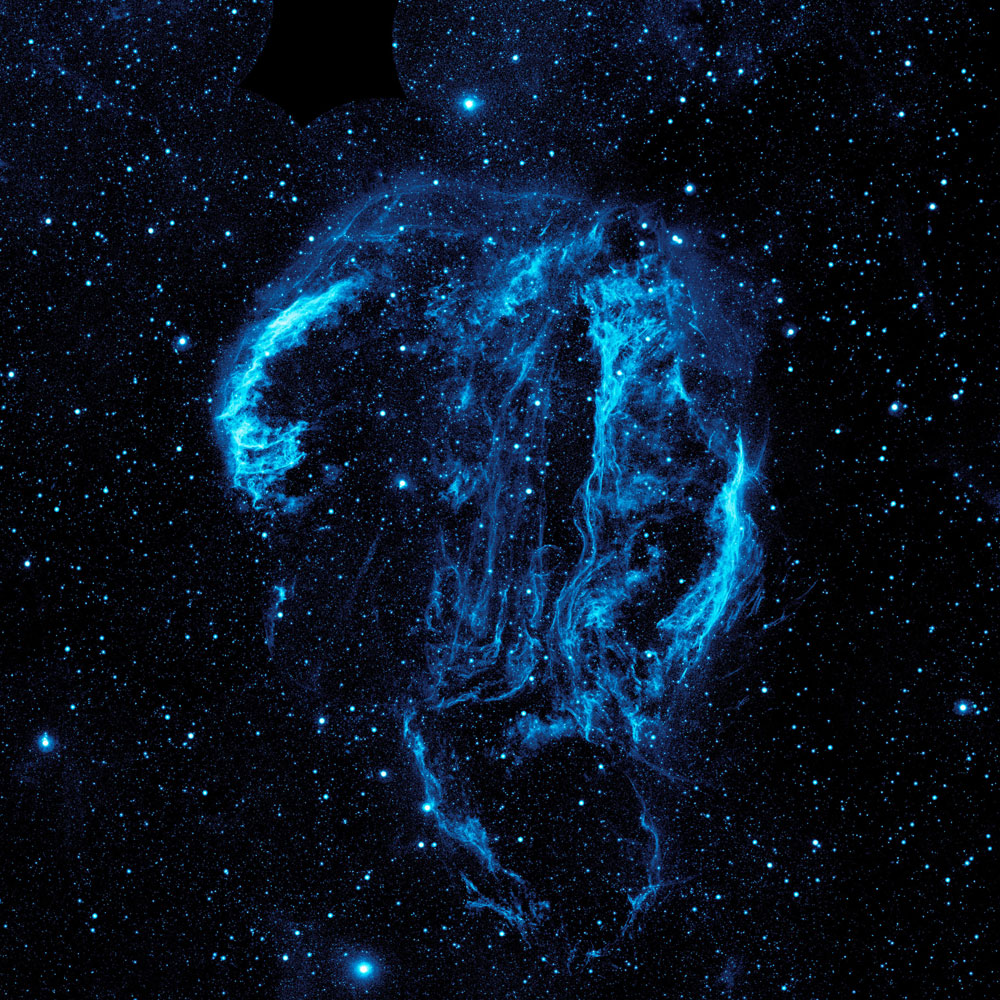
If you’d been here several thousand years ago and looked up in the sky on a clear night, you’d have seen a very small, but very bright object flaring brilliantly some 1,500 light-years away. That would have been the massive supernova that gave birth to what is now the lovely and wispy Cygnus Loop Nebula. It’s not certain just when the blast would have been visible on Earth; it occurred 5,000 to 8,000 years ago and in any event, it would have taken 1,500 years for its light to reach us. What is certain though is that the Cygnus Loop—here captured by the cameras aboard NASA’s Galaxy Evolution explorer—is a stunner. The nebula extends more than three times the size of the full moon in the night sky, and is tucked next to one of the ‘swan’s wings’ in the constellation of Cygnus. The filaments of gas and dust visible here in ultraviolet light were heated by the shockwave from the supernova, which is still spreading outward from the original explosion.
To see more photographs from space check out Our Beautiful Planet: Images from Space by an Astronaut Photographer.

More Must-Reads from TIME
- Cybersecurity Experts Are Sounding the Alarm on DOGE
- Meet the 2025 Women of the Year
- The Harsh Truth About Disability Inclusion
- Why Do More Young Adults Have Cancer?
- Colman Domingo Leads With Radical Love
- How to Get Better at Doing Things Alone
- Michelle Zauner Stares Down the Darkness
Write to Jeffrey Kluger at jeffrey.kluger@time.com